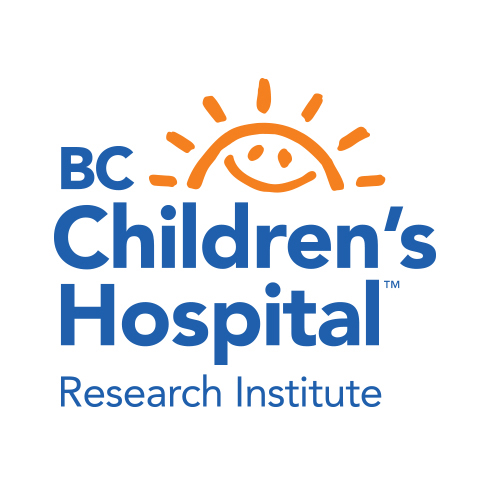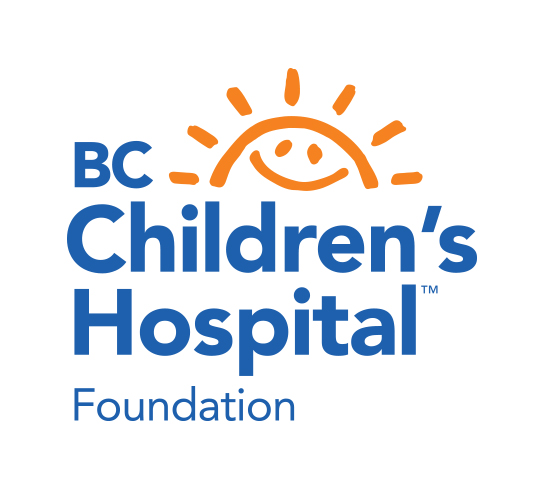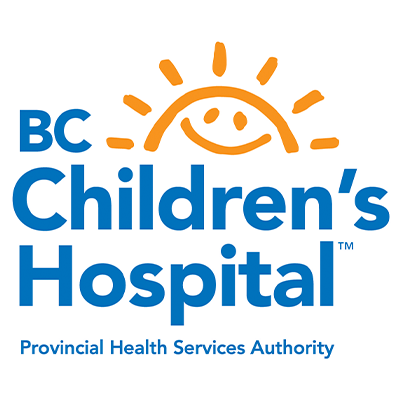Frequently Asked Questions
Thinking about SLIT
- 1. What is sublingual immunotherapy (SLIT)?
-
SLIT consists of daily ingestion of the food your child is allergic to, starting below the amount that would cause a reaction. The dose is then slowly increased over time with a goal of making your child less allergic to the food, reducing the risk of a reaction with an accidental exposure. The immune system is re-trained to tolerate the food your child is allergic to through regular ingestion of small amounts of the food. This program starts by slowly and safely giving a small dose of the food virtually using Zoom, while observed by a SLIT-trained nurse. Increases (“build-up”) in the dose occur every FOUR weeks virtually under supervision of a SLIT-trained nurse. Once your child reaches their last dose (“target” or “maintenance” dose), they will stay on this dose daily for approximately two years or longer before transitioning to oral immunotherapy (OIT). Another option is staying on SLIT longer before consideration of a full oral food challenge.
- 2. What age is SLIT right for?
-
We are currently offering SLIT for children ages 6 and older, or preschool children who were determined by their allergist to be too high risk for OIT based on their previous reactions and/or other criteria.
- 3. What foods are offered?
-
Currently, peanut, tree nuts (walnut, cashew, almond, hazelnut), sesame, milk, egg, wheat, fish, shellfish, mustard, pine nut, sunflower seed, and other legumes. If your child has other food allergies, please discuss these with your allergist and we will determine whether SLIT to these foods is possible.
- 4. Is SLIT right for my child?
-
Your child’s allergist is the best person to help you determine whether this type of program is a good fit based on your child’s medical history and allergy testing results.
- 5. How long is the SLIT program?
-
The build-up portion of the SLIT program is at least a 3-5 month commitment, depending on what your allergist determines is best for your child. After the build-up phase, your child will continue taking the last dose (“target” or “maintenance” dose) for approximately two years or longer before transitioning to oral immunotherapy (OIT). Another option is staying on SLIT longer before consideration of a full oral food challenge.
- 6. How will I be giving my child the SLIT dose?
-
You will be given a recipe on how to dilute or prepare the dose for your child. Because of this, it is necessary for you to purchase a small kitchen scale with two decimal places, to accurately measure out the food. In addition, you will need syringes for accurate measuring, which we will review with you prior to the first visit. At the time of your enrollment into the program, you will receive detailed instructions specific to your child’s appointment.
- 7. What is the success rate of SLIT?
-
In the longest food SLIT study published of 48 children ages 1 to 11 years on peanut SLIT for 3-5 years, 25% were able to successfully pass a full oral food challenge (5000mg of peanut protein around 16-17 peanuts) and 67% were able to at least increase their threshold for reaction (tolerated 750mg of peanut protein, around 2-3 peanuts), which is sufficient to protect against accidental exposures.
- 8. How common are severe reactions (anaphylaxis)?
-
In the 3-5 year study of 48 children ages 1 to 11 years, no severe reactions occurred, and no patients required epinephrine. Side effects were reported with 4.8% of doses, most commonly transient mouth itch. Side effects requiring antihistamines were uncommon (0.21%).
- 9. Is the SLIT program in person or virtual?
-
The SLIT program is completely virtual due to the above safety data. This means that updosing appointments are done virtually at your home with the support of our trained SLIT nurses.
- 10. Is it safe to do SLIT virtually?
-
We start at a low dose and go slowly under the supervision of a trained SLIT nurse to minimize the risk of reactions during SLIT. The protocols we use are chosen to reduce the risk of severe reaction. If you start the SLIT program, you will be given a Patient Manual which will provide further tips on how to minimize the risk.
- 11. My child has asthma – can they still undergo SLIT?
-
Yes, children with asthma can still undergo SLIT as long as their asthma is well-controlled and remains controlled throughout the treatment course. Your child additionally needs to continue to consistently take all asthma medications throughout the treatment course. If the asthma becomes uncontrolled, the SLIT treatment course will be stopped.
- 12. Can multiple foods be treated together during SLIT?
-
Yes, many children undergo SLIT to multiple foods at the same time. Based on your child’s allergies, your allergist will recommend a build-up schedule to multiple foods that is safe for your child.
- 13. How do I get started on SLIT? How can I access SLIT?
-
A referral from your child’s primary care doctor is required to our BC Children’s Hospital allergy clinic to determine whether SLIT is right for your child. The referral form can be found here. Your doctor can fax the referral form to 604-875-3653. Please ask your doctor to clearly indicate that you are interested in learning more about SLIT. Please note that the wait time to see an allergist is approximately 12 months from the date of referral, and another 12-18 months to start SLIT.
- 14. How many allergists/physicians in the community are offering SLIT?
-
Although no community allergists are currently offering SLIT, this is always evolving. If your child already has an allergist, talk to them to learn if they are offering SLIT. If not, we require a referral to our allergy clinic at BC Children’s Hospital to determine whether SLIT is right for your child. The referral form can be found here. Your doctor can fax the referral form to 604-875-3653. Please ask your doctor to clearly indicate that you are interested in learning more about SLIT.
- 15. Will poor air quality from forest fires impact food allergy immunotherapy?
-
Many patients on FAIT have asthma and/or allergic rhinitis (environmental allergies). There is abundant evidence that poor air quality worsens asthma and allergic rhinitis. Worsening of asthma due to poor air quality can be life-threatening, depending on how extreme the poor air quality is. Uncontrolled asthma or allergic rhinitis can subsequently increase the risk of reactions to food immunotherapy doses. A useful indicator to follow is something like the air quality index (e.g., https://www.iqair.com/ca/). On poor air quality days, it is best to stay indoors, ideally in an air-conditioned space, and avoid travel. In addition, some patients may need to be on a higher dose of controller medications during periods of poor air quality. Asthmatics should have their reliever medication available, and go to the nearest Emergency if needing reliever medication more than every 4 hours. As usual, an epinephrine autoinjector should be available at all times in case of a severe food reaction.
- 16. Will FAIT make my child's eczema worse?
-
Most current research shows that eczema is commonly made worse by a wide variety of non-allergic triggers including dryness, irritants, stress, etc., rather than a specific food making eczema worse. Additionally, it is not possible to prove that a food is causing eczema clinically because an allergy skin test or blood test or oral food challenge isn't designed to reveal food triggers of eczema (i.e., no tests are currently available clinically to prove or disprove that a food is causing eczema). In contrast, there is a lot of research showing that avoiding allergenic foods in children with eczema increases the risk of future anaphylaxis to those same foods. In summary, the benefit of preventing future anaphylaxis long-term by staying on OIT or SLIT greatly outweighs any short-term risk of flaring up eczema.
Our recommendation for this clinical scenario is to persist with OIT or SLIT daily despite worsening eczema, for the long-term benefit of preventing anaphylaxis. To deal with the worsening eczema if it occurs, please follow the usual recommendations of: treat flare-ups with prescribed topical medications daily for e.g.) a couple of weeks, apply topical medications to expected "hot spots" (where flare-ups occur often) twice a week in between flares to prevent future flares, and apply moisturizer every day including on top of the areas where topical medications have been applied.
- 17. How many food allergies can be treated at one time?
-
For patients who are allergic to multiple foods, there is no clinical limit to the number of foods that can be treated concurrently. However, there are practical considerations, the main ones being time and effort. Treating roughly 5 foods concurrently is acceptable to many families, but treating more than 5 concurrently can be time consuming for food acquisition, storage, preparation, and dose administration. The decision should be made via shared decision-making with our FAIT team and involve the entire family.
- 18. What if we have more than 5 food allergies?
-
As per above, treating more than 5 foods concurrently may require too much time and effort. In these scenarios, a treatment plan could involve treating the “top 5” foods initially, basing the choice of those on which 5 foods impact the family’s quality of life the most, and which foods are most difficult to avoid for the family. Foods over and above the top 5 could then be deferred and treated in a second round of build-up.
- 19. How many rounds of food allergy immunotherapy will we be able to do?
-
Based on the above considerations, two rounds of treatment (e.g., 5 foods per round) would treat 10 foods. That type of protocol would be adequate for the vast majority of patients with multiple food allergies. Whether a patient should receive a third round of treatment is a rare scenario, and could be discussed in the rare event it is needed. Solutions could include fitting all the foods into two equal rounds (i.e., more than 5 foods per round), only treating the “top 10” foods, or discussing a third round of treatment.
- 20. How will the foods be chosen or decided upon for each round?
-
For children with more than 5 food allergies, a treatment plan could involve treating the “top 5” foods initially, with the choice being based on which 5 foods impact the family’s quality of life the most, and/or which are most difficult to avoid. Shared decision-making is very important.
- 21. How long is the wait between rounds of food allergy immunotherapy?
-
When a second round of FAIT occurs is based on our current waiting lists, the patient’s clinical response (especially safety) to the first round of foods, patient adherence, and satisfaction with the first round of treatment.
- 22. How many follow-up oral food challenges will be needed for patients treated with multiple foods?
-
Due to the waiting list for in-person oral food challenges being typically long, options for reducing the number of in-person oral food challenge appointments include: challenging several foods in a single appointment, virtual oral food challenges, or a combination of approaches. Our data has shown excellent overall safety outcomes for follow-up oral food challenges, allowing us to consider these options for assessing effectiveness. We also plan on studying the role of new investigations which could replace certain oral food challenges.
- 23. Can patients on FAIT receive COVID-19 vaccines?
-
There is no reason for FAIT patients to avoid COVID-19 vaccines. The only patients who need a different approach are the rare patients who already had their first dose of COVID vaccine and experienced an allergic reaction, or those who have a confirmed allergy to PEG (polyethylene glycol). Allergy to PEG is extremely rare, and there is no testing available prior to receiving COVID vaccine to predict who is allergic to PEG. Allergy to PEG is not increased by having allergy to food, medications, or environmental allergens. In summary, your child's risk of an allergic reaction to COVID vaccine is the same as children who have no background of allergy. Please check the CSACI resources and FAQs for answers to all questions related to this topic.
Currently on SLIT
**For more FAQ and Tips & Tricks please refer to the SLIT Patient Handbook provided to you at the start of treatment**
- 1. How often will my child have up-dosing appointments, and what will the appointments look like?
-
Virtual up-dosing appointments will be scheduled approximately every FOUR weeks. Parents are responsible for booking their own appointments via the self-scheduler.
- 2. Should the immunotherapy dose be taken on a full stomach?
-
Yes, the dose should be taken on a full stomach to reduce any abdominal discomfort or risk of reaction.
- 3. When should I be giving my child their dose at home?
-
Doses should be given approximately 24 hours apart, and your child should be supervised for at least TWO hours after the dose is given. You should not let your child sleep during this time. Vigorous exercise should be avoided for at least TWO hours after the dose is given. Regular activity (e.g. playing) is fine. (ex. If your child takes their dose at 4:00pm, they should avoid vigorous exercise until 6:00pm.)
- 4. Does my child still need to carry an epinephrine autoinjector?
-
Yes. Patients should always continue to have their epinephrine autoinjector available to them during the build-up and maintenance stages of therapy. If your autoinjector(s) are close to expiry, please notify our FAIT team and a new prescription will be obtained.
- 5. What if my child spits out all or most of their dose?
-
DO NOT double dose. Just resume normal dosing the next day. If this is a reoccurring issue, please contact the FAIT team for helpful tips or alternative options for dosing.
- 6. What if my child misses a dose?
-
Do NOT give a double dose. Resume normal dosing the next day. If three or more days are missed in a row, contact the FAIT team to discuss how best to proceed.
- 7. Can my child still receive their vaccinations during immunotherapy?
-
Yes. Your child can continue with full vaccination schedules during their sublingual immunotherapy. There are no contraindications to vaccinations during SLIT. However, if your child develops a fever with the vaccine (>38.5 Celsius) their dose should be held.



